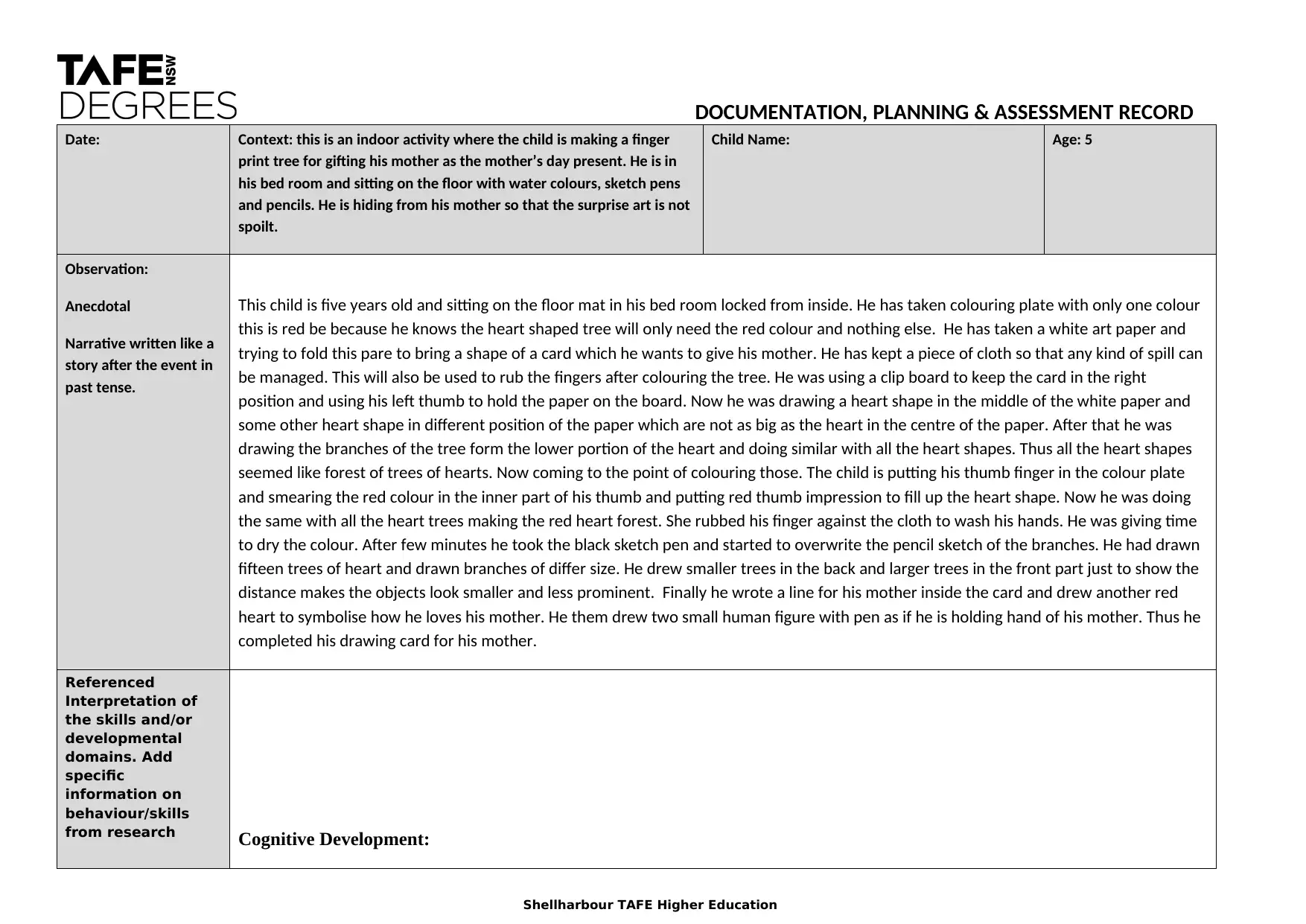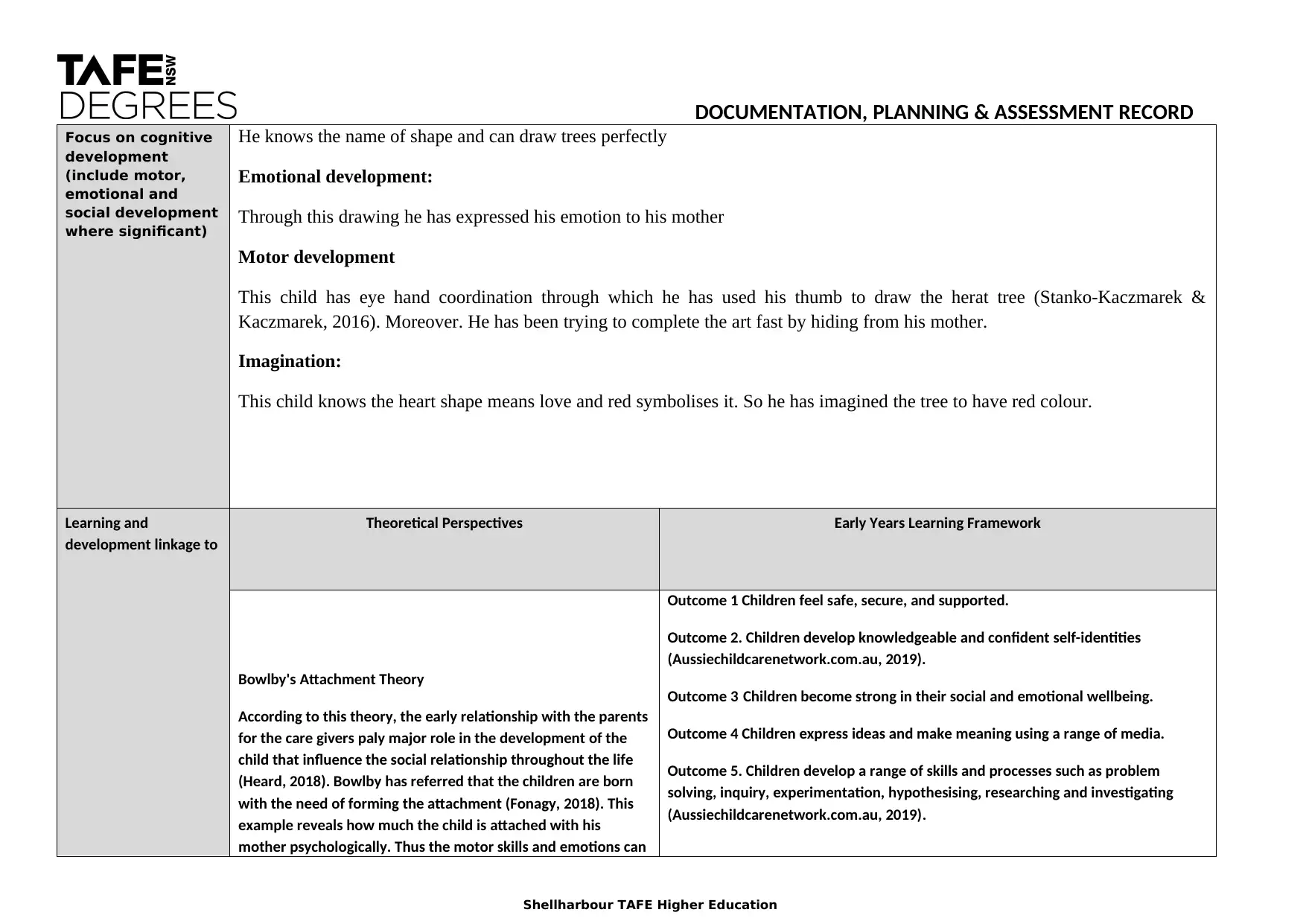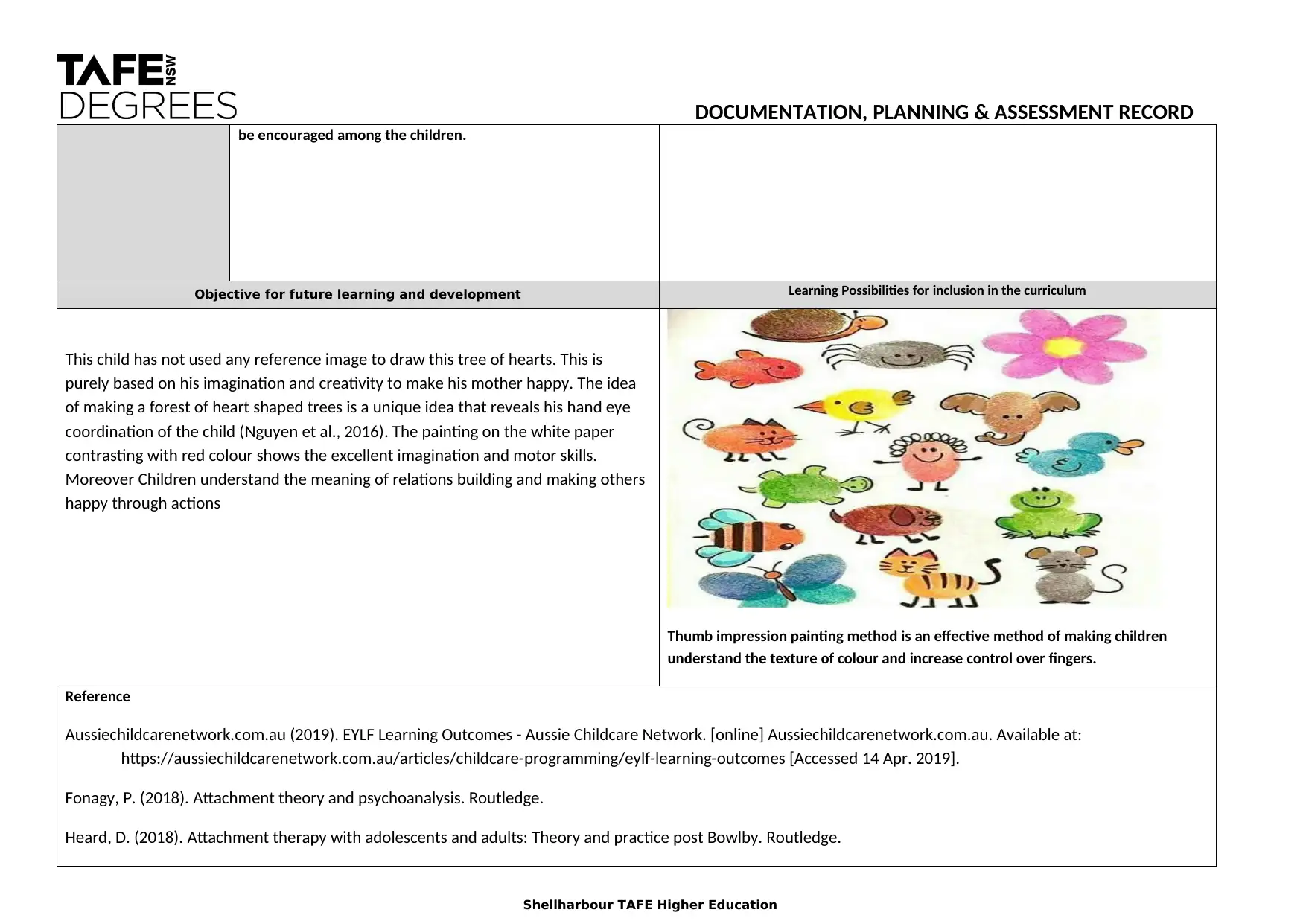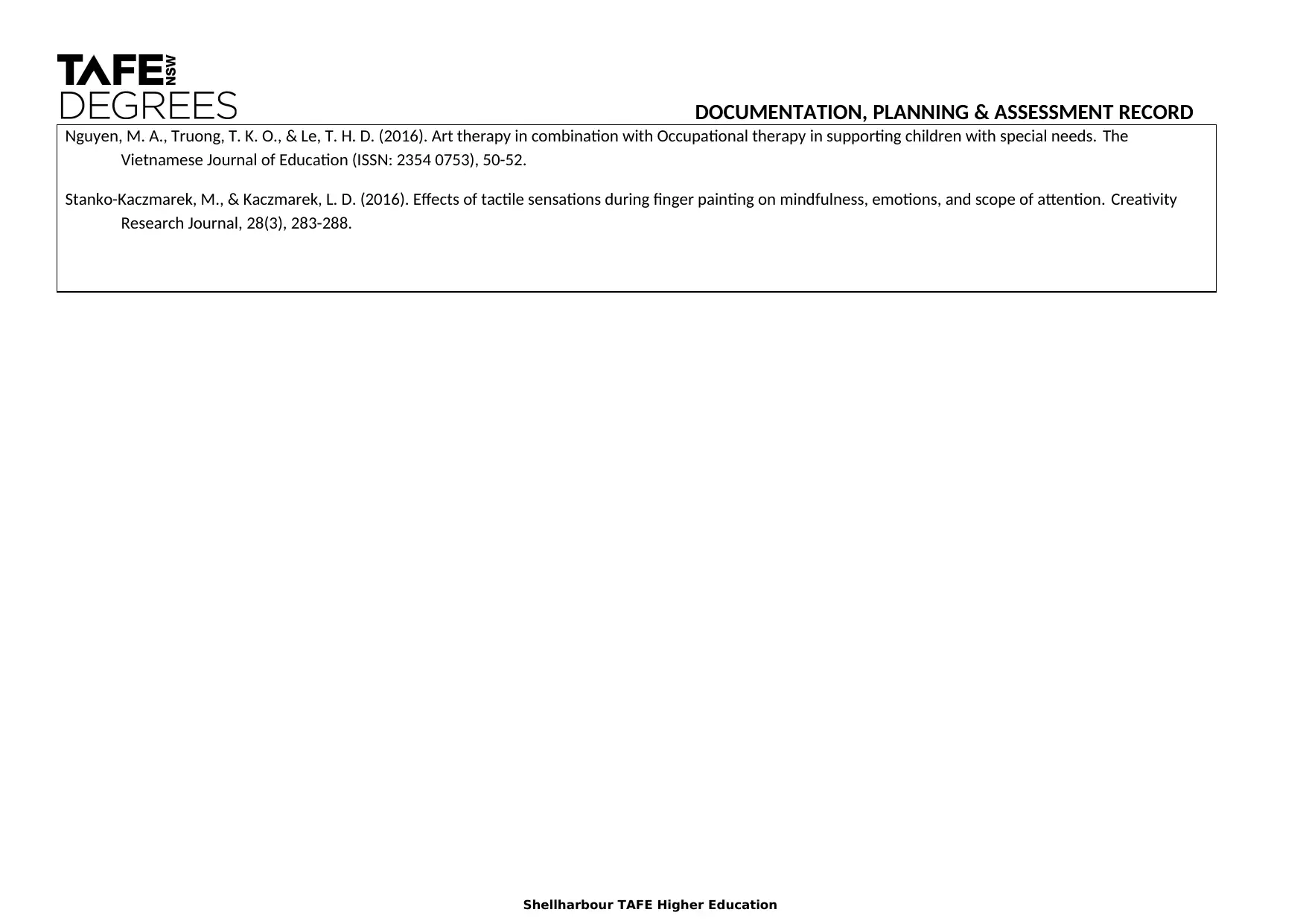Documenting a Child's Fingerprint Tree Art and Developmental Analysis
VerifiedAdded on 2023/01/19
|4
|1139
|23
Practical Assignment
AI Summary
This assignment presents a detailed observation and analysis of a five-year-old child's fingerprint tree art project created for Mother's Day. The documentation includes an anecdotal narrative describing the child's actions, materials used, and creative process, written in past tense. The analysis interprets the child's cognitive, emotional, and motor skill development, referencing relevant research and theoretical perspectives. It highlights the child's understanding of shapes, colors, and emotional expression through the artwork. The assignment links the child's actions to the Early Years Learning Framework, Bowlby's Attachment Theory, and other theoretical frameworks to emphasize the importance of early childhood experiences. The assignment also suggests learning possibilities for inclusion in the curriculum and objectives for future learning and development. References are included to support the observations and interpretations. The assignment also documents a similar art project of underwater marine environment, observing the child's actions, materials used, and creative process. The analysis interprets the child's cognitive, emotional, and motor skill development, referencing relevant research and theoretical perspectives.
1 out of 4





![[object Object]](/_next/static/media/star-bottom.7253800d.svg)